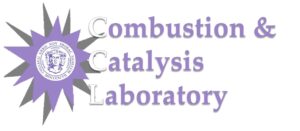- Education:
- Bachelor of Science in Chemical Engineering, Rio de Janeiro State University, RJ, Brazil (September 2013)
- Professional Experience:
- Petróleo Brasileiro S.A (Petrobras) May 2005 – March 2012
- P-37 oil rig, Macaé
Operation of oil and gas production and treatment process plant, via a real-time operating system and also in loco. In charge to manage the gas compression plant, including the operation of a gas turbine, among other pieces of equipment. Responsible for equipment maintenance, stock control of chemicals and participation in hazardous analysis. - Cenpes – Petrobras’s Research Center
Operation of pilot plant specifically dedicated to research in petrochemical area. In charge of preparing and revising operational procedures, reports, equipment lists, process flow diagrams and P&I diagrams. Participation in hazardous analysis and in OH&S Management System. - Rio de Janeiro State University – UERJ Mar 2013 – Jul 2013
Intern in the project “Computational tools for fouling control in preheat trains for petroleum distillation”. Main tool: Matlab. - The City College of New York Oct 2013 – present
Visiting research assistant, researching into the impact of waste fuels in emissions from the cement industry. Main tools: Aspen Plus and Kintecus (kinetic modeling software)
- Description of Research:
- I am currently working on a project aimed to understand the impact of different types of fuel on pollutant emissions from cement industry.Due to high temperatures required in cement kilns, cement industries demand high energy consumption. Most of the energy is still supplied by fossil fuels (mainly coal and petroleum coke), contributing significantly to the production costs, which could be reduced by using alternative fuels with adequate calorific values. In this scenario, refuse derived fuel (RDF) is being widely studied as an alternative fuel and can have a major role in diverting waste currently going to landfill.
Based on the most common fuels in this industry, especially the ones used by those concerned with the environment, a comparison of the pollutants concentrations evolved from the combustion process will be presented, as well as a sensitivity analysis of the influence of the temperatures on emissions and an overall analysis of the kiln and calciner indicating the profile of emissions throughout each unit.
Through experiments with RDF, real data from operating cement plants, Aspen Plus simulation and kinetic modeling based on the GRI mechanism – which was upgraded to consider sulfur and chlorine reactions – this research will provide helpful data in the decision making process in terms of fuel selection for the cement industry.
- I am currently working on a project aimed to understand the impact of different types of fuel on pollutant emissions from cement industry.Due to high temperatures required in cement kilns, cement industries demand high energy consumption. Most of the energy is still supplied by fossil fuels (mainly coal and petroleum coke), contributing significantly to the production costs, which could be reduced by using alternative fuels with adequate calorific values. In this scenario, refuse derived fuel (RDF) is being widely studied as an alternative fuel and can have a major role in diverting waste currently going to landfill.

